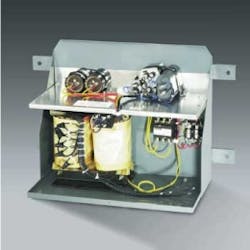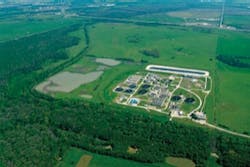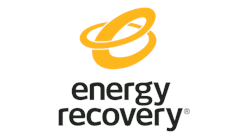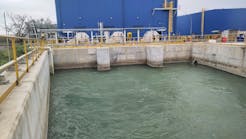By Tom Giordano
The phase converter and the four or six inch submersible pump motor have been quite successfully applied to single phase lines for many years. It is necessary to recognize the special characteristics of the submersible pump motor and also the characteristics that are encountered whenever this motor is operated from a phase converter. These characteristics must be considered in determining the proper size of phase converter for the submersible pump motor.
The Add-a-Phase® is a Autotransformer/capacitor type static phase converter. This unit operates at 97% efficiency and generate no harmonics. It also reduces in-rush on the single phase line during startup.
Submersible motors do not follow standard full load current ratings which apply to equivalent above ground motors of the same horsepower and speed. The submersible pump motors will have a "maximum current rating" which includes the service factor amps of the motor and it can be expected the motor may operate near this maximum rating.
Once being aware of the increased full load ampere and service factor rating of the submersible pump motor, it does indicate that the installation must be evaluated differently than the above ground motor installation of the equivalent horsepower.
Wire sizes will be greater and the KVA requirement will also be increased. The submersible pump motor manufacturer furnishes a chart indicating the proper size of wire that must be used for the specific motor. These recommendations should be followed exactly.
Open Wye or Open Delta 3-phase services are not normally recommended for submersible pump applications. When they must be used it is recommended the next size larger horsepower motor and next larger size conductor be used on these applications.
The Rotoverter® is an Adjustable Rotary Transformer type rotary phase converter. This unit is designed to operate motors for extended periods of time at full load and at a high power factor.
One must also keep in mind that the submersible pump motor stands a very good chance of being applied to a load which will cause the motor to operate near the service factor amps of that motor.
These details affect the installation of the submersible pump motor on a 3-phase line and likewise have an effect on applying a phase converter to the same application. Phase converters, static or rotary, must be properly sized to the maximum ampere rating of the submersible pump motor. Some phase converters have specific sizes for submersible pumps while others recommend the next larger size converter to be used on the submersible pump motor application.
Static Phase Converters
Static phase converters are normally manufactured in two styles. They are the straight capacitor design or in the autotransformer-capacitor type design. The straight capacitor is not recommended for the submersible pump motor. The autotransformer-capacitor design is the unit most commonly applied to the submersible pump application. This time- and field-proven device is capable of operating a 3-phase motor at 100% rated horsepower on a single phase line.
The unit consists of an autotransformer, running capacitors, starting capacitors and a contactor to take the starting capacitors out of the circuit after the motor is up to speed.
These type units must be sized properly to obtain satisfactory operation of the 3-phase submersible pump motor on a single-phase line. The maximum ampere rating of the submersible pump motor determines the size of converter required. This maximum ampere rating should be compared to standard above ground full load ampere charts of 3-phase motors to determine the equivalent size of phase converter required. Some manufacturers of this type phase converter have specific types recommended for submersible pump motors.
This type converter has excellent power line characteristics. The full load single-phase power factor, with the motor operating, will be near unity or slightly leading depending upon line characteristics, the load, the length and size of conductor between the converter and the motor. The starting current will be 2 ½- 3 times the full load rating of the converter on the single-phase line and the power factor will be leading during starting. Submersible pump motors normally start in less than one second from this type of converter. Any submersible pump motor operating continuously, such as an open discharge, can be operated with excellent motor phase current balance.
The main disadvantage of applying the submersible pump motor to the autotransformer-capacitor style converter is that current balance can be achieved at only one load condition. If there is a wild fluctuation to the load on which the submersible pump motor is applied, the phase currents will go out of balance.
The autotransformer- capacitor phase converter can be manufactured with a very unique feature. It can be designed to operate a 460 volt 3 -phase submersible pump motor from either a 230 or 460 volt single-phase line. This feature will result in considerable savings during installation, particularly if only 230 volt single-phase is available to a deep set submersible pump motor. Use of the 460 volt 3-phase motor on the 230 volt single-phase system will result in much smaller wire size and a smaller pump control than would be used on the 230 volt 3-phase installation from the 230 volt single-phase line.
Installation Considerations
The single-phase electrical service to the autotransformer-capacitor converter should follow standard wiring practices for the single-phase full load ampere rating of the converter. This should consist of a single phase safety switch or circuit breaker, as the converter disconnect, and the proper size and type of wire. The wiring from the phase converter to the submersible pump motor should follow the 3-phase recommendation as specified by the submersible pump motor's manufacturer. Specifications with respect to the size of motor starter, overload protection and the size of conductors for the depth of the pump setting should be clarified with the pump manufacturer.
The autotransformer-capacitor style converter has very low power consumption when the motor is not operating. The core and copper loss of the autotransformer are the only losses. For example, a 15 hp unit would dissipate about 60 watts.
Rotary Phase Converters
Rotary phase converters are manufactured in two types. They are the non-adjustable rotary transformer and the adjustable rotary transformer designs. Both units have been successfully applied to 3-phase submersible pump motors on single-phase lines. Either the non-adjustable or adjustable type rotary converters consist of a rotary transformer (aka: motor) and one or more capacitor banks.
The non-adjustable rotary converter has limited control of the motor phase currents. It is somewhat possible to adjust the phase currents by varying the amount of capacitance in the circuit; however, only moderate success is achieved in this procedure. In many cases it is not possible to obtain current balances within the 5% tolerance recommended for submersible pump motors.
Installation Considerations
Rotary converters develop very low starting torques and on any submersible pump application that might require high starting torque, it may be necessary to add a starting panel to the installation. If the starting panel is needed it should be connected to the load side of the magnetic starter. The starting panel, when wired in at this point, will get the motor up to speed in 2 or 3 seconds and automatically disconnect itself from the circuit when the motor reaches full speed.
Conclusions
It is possible to successfully operate a 3-phase submersible pump motor on a single-phase line through the use of either a static or rotary phase converter. Proper installations can be achieved only if the recommendations and specifications of both the phase converter and submersible pump motor manufacturers are followed.
About the Author: Tom Giordano is the National Sales and Marketing Manager for Ronk Electrical. He has over 25 years in the electrical control business including managing a system integration group building water system projects and managing an electrical distributors technical products group responsible for the sales and support of drives, PLC sales and Scada software.Past IWW Issues



